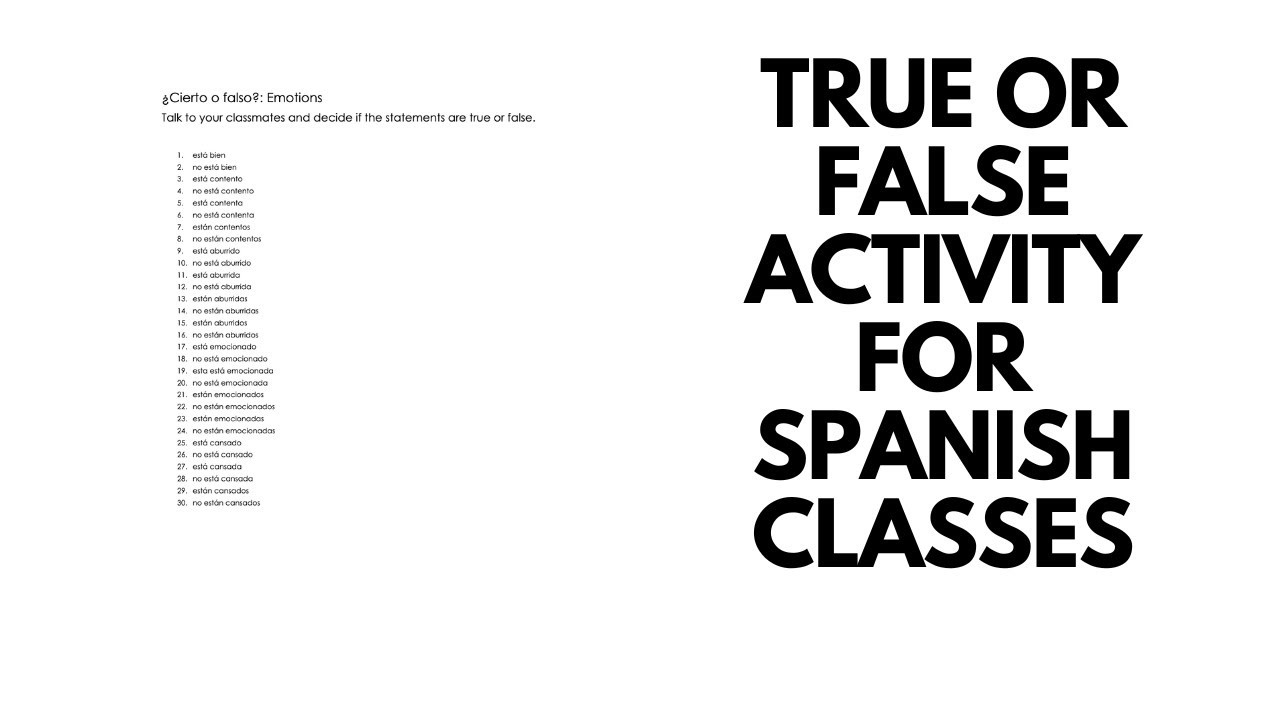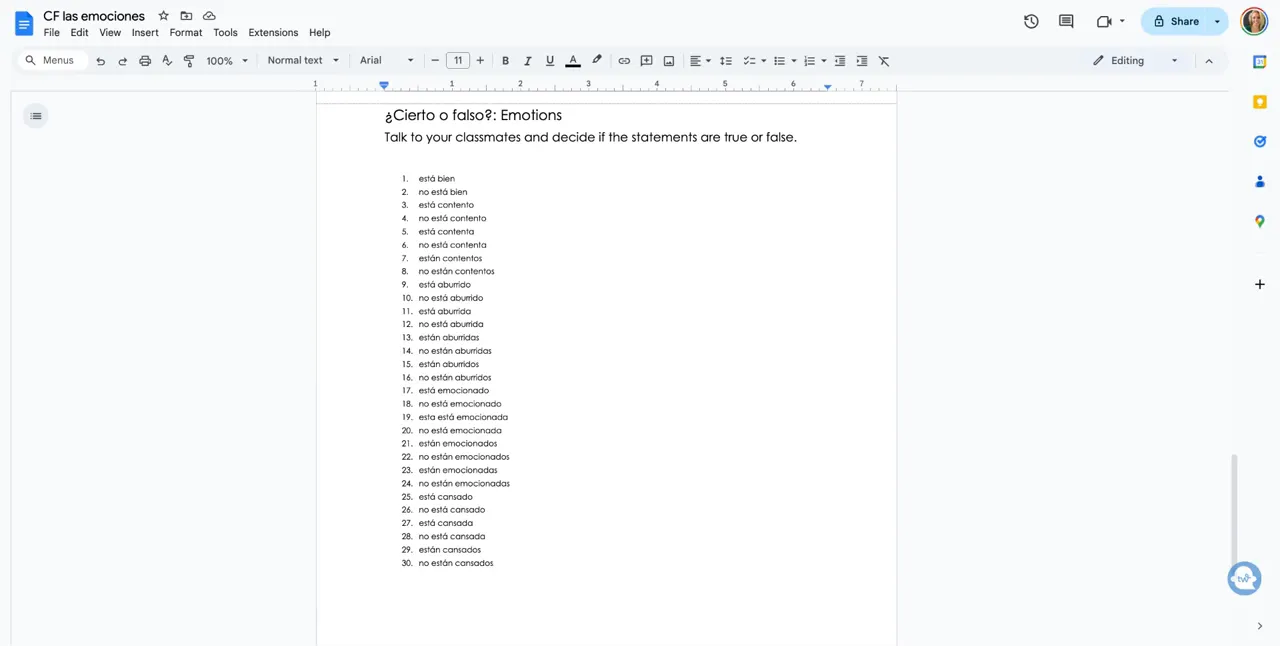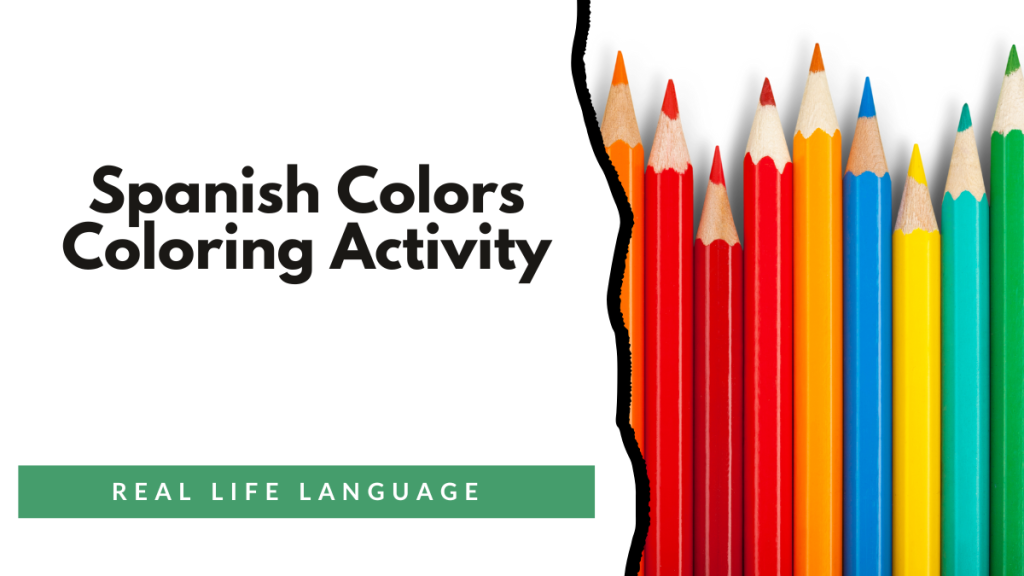
In my video I demonstrate a favourite classroom routine for Teaching Languages: True or False. I use it all the time to practise vocabulary, grammar and verb tenses — in the clip I focus on emotions, but the technique is flexible and easy to adapt. Below I’ll walk you through how to prepare, run and extend the activity so you can use it in your next lesson.
Why I love the True or False activity
Teaching Languages: True or False works because it combines meaningful communication with controlled practice. Students must ask and answer questions, use target-language structures, and make quick decisions about truth values — all of which promote accuracy and fluency. As I say in the video, “This is one of my favorite activities to teach vocabulary, grammar, verb tenses.”

What you need
- A list of short, incomplete sentences tailored to the names and situations of people in your class.
- One worksheet or copy per student (or pair) with the sentence set.
- A clear instruction in the target language for how to ask, answer and record responses.
Step-by-step: How to run the activity
- Prepare sentences specific to your group. Use real names from the class for immediacy — for example: “María está bien” or “Juan no está bien.”
- Make copies and hand them out.
- Students circulate (or interview neighbours) asking whether each sentence is true or false. They must ask and answer in the target language and mark their answers on the worksheet.
- After a set time, bring the whole class together and review which sentences are true and which are false. Encourage students to explain why and to correct any mistakes in full sentences.
Example sentences (Spanish — emotions)
- María está bien.
- Juan no está bien.
- Pedro está cansado.
- Ana está contenta hoy.
- Nosotros estamos preocupados.
Make these sentences personal and believable. If you know someone was tired yesterday, write “Pedro estaba cansado ayer” to practise past tenses.
Variations and extensions
- Change the grammar focus: Use present, past or future tenses to practise specific verb forms.
- Swap topics: Emotions, physical states, hobbies, family, daily routines — the format works for any vocabulary set.
- Pair vs whole-class: For lower levels keep it as pairwork; for higher levels make it classwide with students reporting on each other’s answers.
- Written follow-up: After the activity, ask students to write short explanations for three true and three false sentences to consolidate production.
- Digital version: Use a shared document or quiz tool where students mark true/false and add comments in the target language.
Tips for success
- Always customise sentences to your class so they feel real and relevant.
- Model the question-and-answer format before students begin. Demonstrate asking in the target language and answering with short full sentences.
- Encourage accuracy: if you hear a mistake, ask a follow-up question rather than immediately correcting to keep communication flowing.
- Differentiate by complexity: simpler sentences for beginners, more clauses and varied tenses for advanced learners.
Assessment and classroom value
This activity gives you instant formative assessment: you can hear which structures students produce correctly and which need more work. It’s low-prep (especially if you reuse or tweak pre-made sentence sets) and highly engaging, perfect for warm-ups, closures or a focused grammar practice slot.
Conclusion
If you want a reliable, adaptable method to practise vocabulary, verb tenses and real communication, Teaching Languages: True or False is a go-to activity. Try tailoring a set of sentences to your next class and watch how quickly students start using the target language to ask, answer and explain. For ready-made sentence banks and more ideas, check the resources I mention in the video description.

